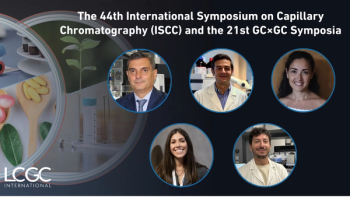
- The Column-02-18-2013
- Volume 9
- Issue 3
2,000-year-old medicine discovered on shipwreck
Tablets found aboard an ancient shipwreck could identify the early beginnings of medicine. A team of scientists led by Erika Ribechini of the University of Pisa (Pisa, Italy) determined the composition of tablets found aboard a ship-wrecked off the coast of Tuscany (Italy) around 2,000 years ago.1
Tablets found aboard an ancient shipwreck could identify the early beginnings of medicine.
A team of scientists led by Erika Ribechini of the University of Pisa (Pisa, Italy) determined the composition of tablets found aboard a ship-wrecked off the coast of Tuscany (Italy) around 2,000 years ago.1
Analysis of the inorganic compounds was performed using energy dispersion (SEM-EDX) and fourier transform infrared spectroscopy (FTIR); and analysis of the organic compounds was performed using an analytical procedure based on gas chromatography–mass spectrometry (GC–MS).GC–MS analysis showed that the tablets contained a mixture of vegetal and animal fats, plant pollens and beeswax. One of the most abundant classes of compounds was zinc hydrocarbonate and zinc carbonate, still used widely in modern medicine formulations. The authors speculate that the tablets were used as eye medication, potentially an eyewash.
According to co‑author and colleague Giachi Gianna, Soprintendenza per i Beni Archeologici della Toscana (Florence, Italy), ancient medicines are rarely found, and so it is very unusual for their chemical composition to be published. The majority of the information available on these medicines is known solely from the writings of ancient authors.
The tablets were originally discovered in 1990, but it was only recently that scientists chose to update the investigation. Medical equipment was found aboard the ship indicating that a physician would have been travelling as part of the crew when the ship was wrecked. Amongst the artifacts were 136 wooden vials, a stone mortarium, a cupping bronze, an iron probe and a number of tin pyxies (small boxes used to hold medicines).
The regular discoid-shaped tablets were found within one of the tin pyxies. The lack of oxygen within the container combined with a tight seal formed by the degradation products of the tin pyxis had created an unusual preservative environment.
Gianna told The Column that the authors hope to compare the composition of the tablets with other medicines in the future.
Reference
Gianna Giachi et al, PNAS DOI: 10.1073/pnas.1216776110 (2013).
Articles in this issue
almost 13 years ago
We Just Can't Do It!almost 13 years ago
Trapping versus Fractionationalmost 13 years ago
Therapeutic poisonNewsletter
Join the global community of analytical scientists who trust LCGC for insights on the latest techniques, trends, and expert solutions in chromatography.




